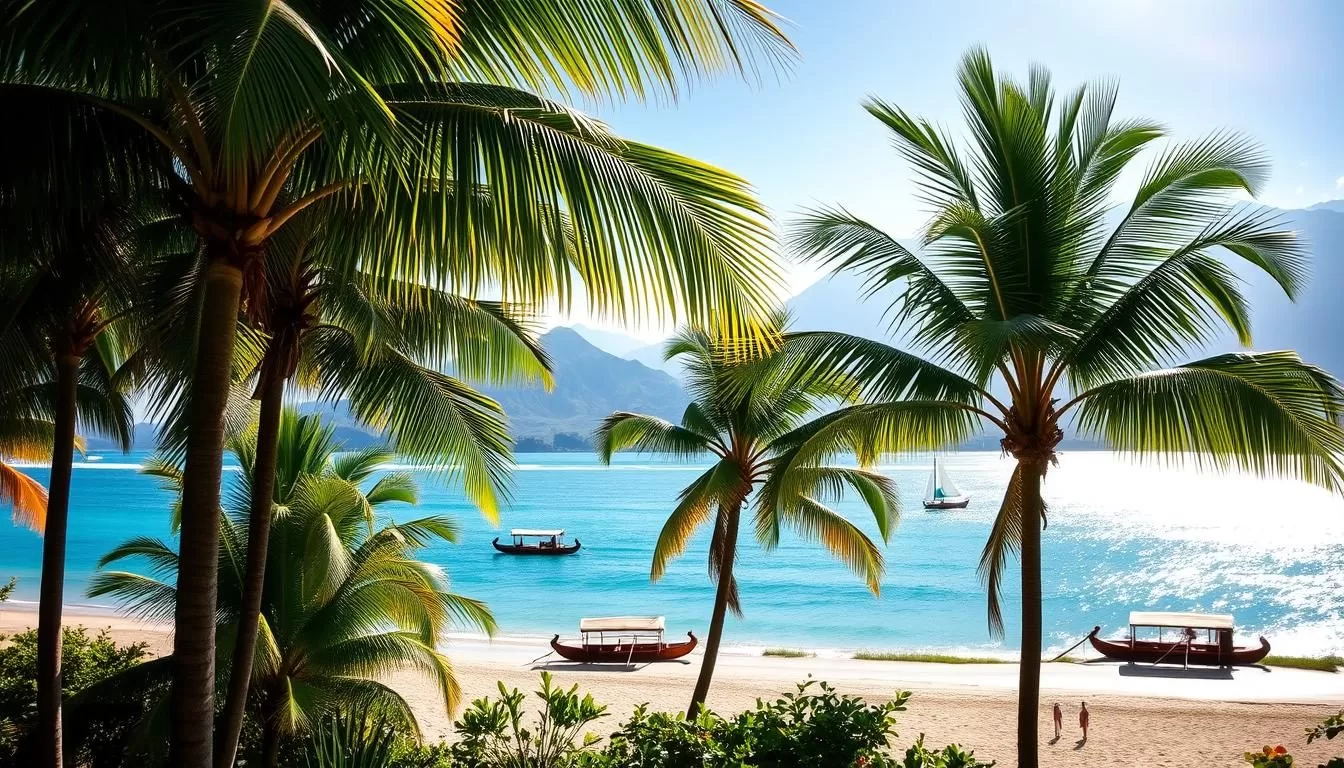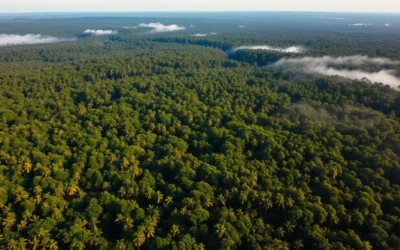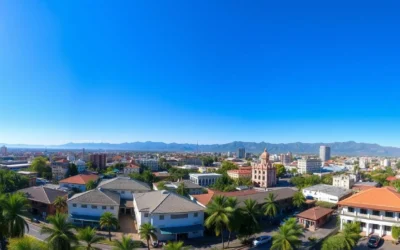✓ Accommodations✓ Flights✓ Rental Cars
Planning a trip to Bali can be a daunting task, especially when considering the island’s climate. Known for its lush landscapes and warm culture, Bali is a paradise for beach lovers and adventure seekers alike. However, understanding the island’s weather patterns is crucial for a memorable experience.
The climate in Bali is characterized by two main seasons: wet and dry. While the island enjoys a tropical climate year-round, the weather can significantly impact your experiences. To make the most of your trip, it’s essential to identify the best time to visit Bali based on your preferences.
Whether you’re looking for sun-soaked beaches or lush landscapes, this guide will help you navigate Bali’s weather and plan a time that suits your adventure.
Understanding Bali’s Tropical Climate
Bali’s tropical climate is marked by relatively consistent temperatures throughout the year, with variations in humidity and rainfall. This consistency makes it a popular destination for travelers seeking warm weather.
The Two Faces of Bali’s Weather: Wet and Dry Seasons
Bali’s weather is characterized by two main seasons: the wet season and the dry season. The dry season, which typically runs from May to September, is marked by dry and sunny conditions, making it ideal for outdoor activities like beach trips and hiking. In contrast, the wet season, spanning from October to April, brings significant rainfall, although the rain showers are often followed by sunshine.
- The dry season offers perfect conditions for exploring Bali’s outdoors, with average temperatures ranging from 27-32°C (80-90°F).
- The wet season, while cooler, brings higher humidity, which can make the temperature feel warmer.
Temperature Patterns Throughout the Year
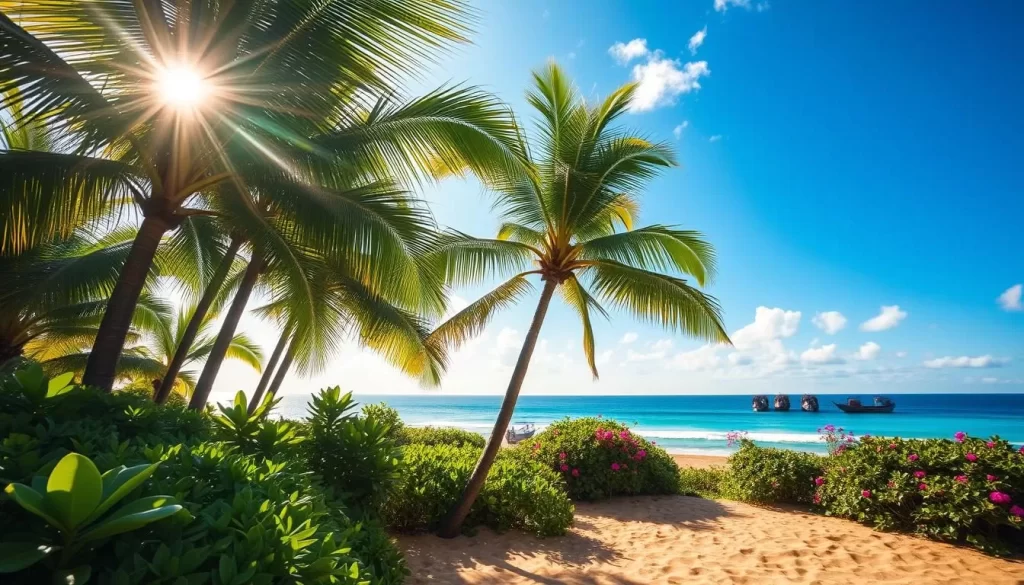 Bali’s temperature remains relatively consistent, with daytime averages between 27-32°C (80-90°F). May is typically the hottest month, averaging 31°C (88°F), while August is the coolest and sunniest, averaging 30°C (86°F).
Bali’s temperature remains relatively consistent, with daytime averages between 27-32°C (80-90°F). May is typically the hottest month, averaging 31°C (88°F), while August is the coolest and sunniest, averaging 30°C (86°F).
- Nighttime temperatures are pleasant year-round, ranging from 22-25°C (72-77°F), ideal for evening activities.
- Highland areas like Ubud and Kintamani offer cooler temperatures, 3-5°C lower than coastal regions, providing a refreshing alternative.
Bali Island, Indonesia: Best Months for a Weather-Savvy Trip
To make the most of your Bali trip, it’s essential to know the best months to visit. Bali’s tropical climate means that the island experiences a wet and dry season, each offering a unique experience for travelers.

May to September: The Dry Season Sweet Spot
The dry season in Bali, from May to September, is considered the best time to visit for most travelers. During this period, the weather is dry and sunny, making it ideal for outdoor activities and exploring the island.
The dry season offers perfect conditions for visiting Bali’s beautiful beaches, diving, and enjoying the local culture without the hindrance of rain.
April and October: The Shoulder Season Advantage
April and October are considered shoulder months, offering a great balance between good weather and fewer crowds. In April, the wet season is winding down, and you can enjoy decreasing rainfall and increasing sunshine.
- You’ll discover that April and October offer a special advantage as shoulder season months, balancing good weather with fewer crowds and more affordable prices across the island.
- In April, you’ll experience the transition from wet to dry season, with decreasing rainfall and increasing sunshine, though you should be prepared for occasional showers and higher temperatures.
- October marks the beginning of the transition back to wet season, with gradually increasing rainfall probability as the month progresses, but many days remain sunny and perfect for beach activities.
- During these shoulder months, you’ll benefit from significantly reduced tourist numbers compared to peak season, giving you more space to enjoy popular attractions and a more authentic experience of Bali’s culture.
- Hotel rates and tour prices typically drop by 20-30% during these periods, making April and October excellent choices if you’re looking to maximize value while still enjoying relatively favorable weather conditions.
By considering these periods, you can plan your trip to Bali during the best time, ensuring a memorable and enjoyable experience.
Month-by-Month Weather Guide to Bali
As you plan your Bali getaway, a detailed look at the island’s weather patterns will help you make the most of your trip. Bali’s climate varies significantly from month to month, with distinct characteristics that can greatly impact your island experience.
January to March: Navigating the Heart of Rainy Season
During the first quarter of the year, Bali is in the midst of its rainy season. January and February are typically the wettest months, with frequent rain showers and higher humidity. While this might deter some travelers, it’s also a period of lush green landscapes and fewer tourists, making it an excellent time for those looking for a more serene experience.
April to June: Transition to Perfect Weather
As the rainy season comes to an end, April and May mark the beginning of a transition towards drier and sunnier conditions. By June, Bali is fully immersed in its dry season, offering pleasant temperatures and ideal conditions for outdoor activities. This period is perfect for enjoying the island’s beautiful beaches and engaging in water sports.
July to September: Peak Dry Season
The peak dry season, spanning from July to September, is characterized by cool breezes, low rainfall, and plenty of sunshine. July and August are particularly popular among tourists, with the island offering ideal conditions for beach activities and water sports. August is known for its windy conditions, making it a great time for windsurfing and kitesurfing. September continues the dry trend, with pleasant weather and fewer crowds.
Here’s a summary of what you can expect during the peak dry season months:
| Month | Weather Conditions | Activities |
|---|---|---|
| July | Sunny days, cool breezes | Beach activities, water sports |
| August | Windy, coolest temperatures | Windsurfing, kitesurfing |
| September | Pleasant weather, less wind | Beach activities, outdoor exploration |
During these months, you can enjoy dry season activities to the fullest, taking advantage of the island’s beaches and engaging in various water activities. The winds in August create ideal conditions for wind-related sports, while the overall pleasant weather makes it an excellent time to explore the island.
Regional Weather Variations Across Bali
As you explore Bali, you’ll notice that different regions experience distinct weather patterns. This variation is due to the island’s diverse geography, which includes beaches, highlands, and mountains.
Southern Beaches: Kuta, Seminyak, and Nusa Dua
The southern beaches, including Kuta, Seminyak, and Nusa Dua, are among Bali’s most popular tourist destinations. These areas tend to have a relatively consistent weather pattern, with the dry season offering sunny days ideal for beach activities and water sports like diving. However, they can be quite crowded during peak season.
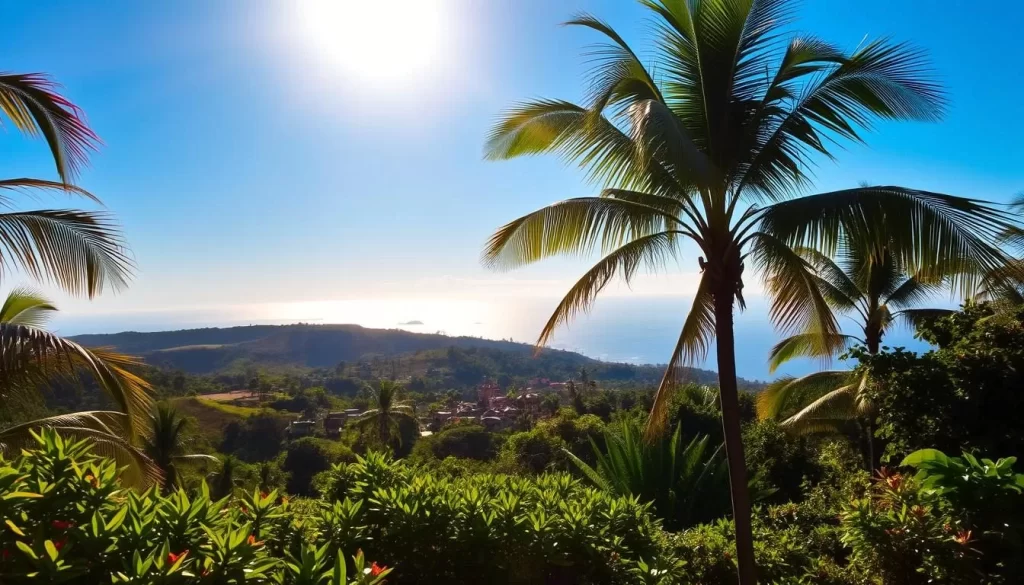
Central Highlands: Ubud and Surroundings
Ubud and its surroundings, located in the central highlands, enjoy a milder climate compared to the coastal areas. The temperature is generally cooler, making it a pleasant destination for visitors who prefer fewer crowds and lush green landscapes. The wet season brings life to this region, with the rain nourishing the rice fields and forests.
Northern and Eastern Coasts: Different Microclimates
The northern and eastern coasts of Bali, such as Lovina and Amed, experience different microclimates. These regions tend to be calmer and slightly cooler than the south. Lovina is known for its tranquil sea conditions, ideal for diving and dolphin watching. Amed, with its black sand beaches, enjoys a gentle breeze, making the climate feel less intense. The wet season affects these areas less severely than the south, sometimes experiencing sunny days while the southern beaches receive rainfall.
- The northern coast around Lovina is drier during the wet season, making it a good alternative.
- Eastern coastal areas like Amed have their best weather from April to October.
- These regions are less crowded, offering more authentic experiences.
Weather-Based Activities for Every Season
Whether you’re looking for adventure in the dry season or cultural immersion during the rainy season, Bali has something for everyone. The island’s diverse climate and geography create a wide range of experiences tailored to the different seasons.
Dry Season Adventures: Beaches, Diving, and Outdoor Exploration
During the dry season, from May to September, Bali’s beaches are perfect for sunbathing, swimming, and water sports. The crystal-clear waters offer excellent diving and snorkeling opportunities, with numerous dive sites around Nusa Lembongan and Tulamben. You can also explore the island’s lush interior, hiking through rice fields and villages, or take a scenic drive along the coast.
The dry season is ideal for outdoor activities like surfing in Kuta, cycling through the countryside, or trekking up Mount Batur to watch the sunrise. With pleasant weather and minimal rainfall, it’s the perfect time to enjoy Bali’s natural beauty.
| Activity | Location | Best Time |
|---|---|---|
| Surfing | Kuta Beach | May to September |
| Diving | Nusa Lembongan | June to August |
| Hiking | Mount Batur | July to September |
Rainy Season Experiences: Cultural Immersion and Indoor Delights
The rainy season, spanning from October to March, brings a different charm to Bali, with lush landscapes and a cooler climate. It’s an excellent time for cultural visits and indoor activities. Ubud, known as Bali’s cultural heart, offers art galleries, museums, and traditional dance performances.
You can indulge in Bali’s renowned spa treatments and wellness retreats, enjoying yoga classes, meditation sessions, and traditional massages. The rainy season is also a great time for culinary adventures, with cooking classes and food tours allowing you to savor local cuisine while staying dry.

- Explore Ubud’s art galleries and museums.
- Enjoy spa treatments and wellness retreats.
- Join cooking classes or food tours.
Planning Tips for Weather-Savvy Travelers
Knowing what to expect from Bali’s weather can help you pack and plan more effectively. As you prepare for your trip, consider the time of year and how it might impact your activities and experiences.
Packing for the Season
When visiting during the dry season, from May to September, pack lightweight clothing and sunscreen to protect yourself from the sun. In contrast, the wet season, which runs from October to April, requires waterproof gear and comfortable shoes for indoor activities.
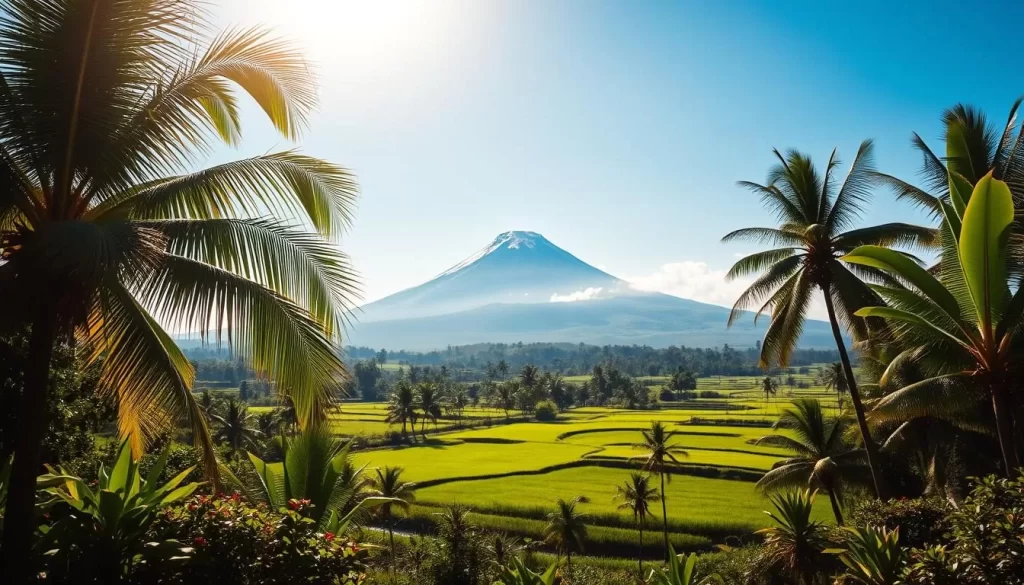
Navigating Crowds and Prices
The peak tourist season, from July to August, means larger crowds and higher prices for accommodations and tourist services. If you’re looking for a more relaxed experience, consider visiting during the shoulder season, in April or October.
| Season | Characteristics | Best For |
|---|---|---|
| Dry Season (May-Sept) | Clear skies, warm weather | Beach activities, outdoor explorations |
| Wet Season (Oct-Apr) | Rainy, cooler mornings and evenings | Cultural immersion, indoor activities |
| Shoulder Season (Apr, Oct) | Fewer crowds, pleasant weather | Balancing weather and crowd preferences |
Weather Considerations for Special Events
Bali hosts numerous festivals throughout the year, with the dry season being ideal for outdoor events like the Bali Arts Festival and the Bali Kite Festival. Even during the wet season, events like the Nusa Dua Light Festival offer unique experiences. Always check the weather forecast before attending outdoor events and plan accordingly.
By being mindful of the weather and planning accordingly, you can ensure a memorable and enjoyable trip to Bali, regardless of when you visit.
Conclusion: Embracing Bali in Any Season
With its varied landscapes and climate, Bali offers a distinct experience in every season, making it a year-round destination. As you’ve explored, the island’s weather patterns significantly influence the activities and landscapes you’ll encounter during your trip.
The best time to visit Bali depends on your preferences, whether you prioritize beach weather, cultural immersion, or budget considerations. By understanding and planning around Bali’s weather and regional variations, you can create an unforgettable trip during any time of year.
- Each season brings its unique charm and opportunities for different experiences on this versatile island.
- Bali’s warm hospitality, rich culture, and natural beauty remain constant throughout the year, ensuring memorable experiences whenever you visit.
In conclusion, Bali is a true gem that shines in every season, offering a wealth of experiences for travelers. Whether you visit during the dry or wet season, your exploration of this beautiful island is sure to be rewarding.
The above is subject to change.
Check back often to TRAVEL.COM for the latest travel tips and deals.
